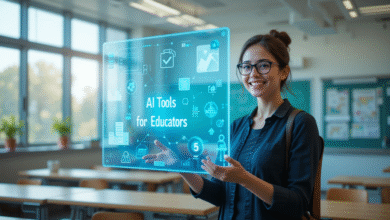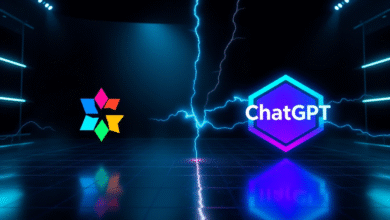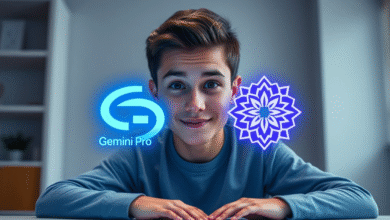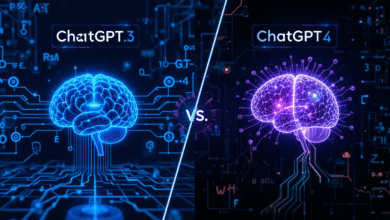
Every student knows the feeling. You’re staring at a homework problem, reading the same paragraph over and over, and your brain feels like it’s hit a brick wall. The teacher moved on hours ago, and you feel completely lost and frustrated. What if, in that exact moment of confusion, you could get a perfect, personalized explanation just for you? This is the powerful promise of AI Tutoring Systems.

These aren’t just fancy chatbots or glorified search engines. They are sophisticated platforms designed to replicate the experience of working with a master one-on-one tutor. The rise of powerful AI Tutoring Systems represents one of the most significant shifts in modern education, moving away from a world of delayed help and towards a future of instant understanding.
But how do they actually work? And do they truly improve student performance? This guide will break down the mechanics behind these systems, revealing how they deliver that “aha!” moment on-demand.
The Core Problem: The “Waiting Game” in Learning
The biggest flaw in traditional learning is the “waiting game.” You wait to ask a question, you wait for feedback on your homework, and you wait for your turn for help. By the time help arrives, the original learning moment is gone. AI Tutoring Systems are designed to completely eliminate this waiting game.
They operate on a simple but powerful premise: provide immediate, targeted support the second a student shows signs of struggling. This instant intervention is what makes them so effective at improving student performance.

The AI Tutor’s Brain: A 3-Step Process
An AI tutor isn’t “thinking” like a human, but it is running a constant, high-speed analysis. The process can be broken down into three key functions, which are visualized in the interactive “3D Card Flip” guide below. This format is designed to be more engaging than a simple table.
The AI Tutor’s Brain: A 3-Step Process
Click on a card to reveal how it works.
Diagnose
Find the Root Problem
The AI doesn’t just see a wrong answer; it analyzes *why* it’s wrong to find the specific knowledge gap.
Intervene
Deliver Targeted Help
Based on the diagnosis, it provides the perfect piece of help—a hint, a video, or a simpler problem—instantly.
Adapt
Adjust the Learning Path
The AI remembers every interaction and adapts the student’s future lessons, creating a truly personalized journey.
The Real-World Impact: How This Translates to Better Grades
Knowing how AI Tutoring Systems work is one thing; understanding their tangible impact is another. The benefits are not theoretical; they directly translate into improved student performance in several key ways, making learning more efficient and effective.
Traditional vs. AI-Powered Approach
Traditional Method
Delayed by hours or days, after the learning moment has passed.
AI Tutor Method
Instant and real-time, allowing immediate correction and understanding.
Traditional Method
Standardized “one-size-fits-all” worksheets for the entire class.
AI Tutor Method
Personalized practice sets that adapt in difficulty to the student’s level.
Traditional Method
Fear of asking questions in front of peers can hinder participation.
AI Tutor Method
A safe, private space to make mistakes and ask questions without judgment.
AI Tutor vs. Human Tutor: An Honest Comparison
It’s crucial to understand that even the best AI Tutoring Systems are not designed to replace human tutors, but to supplement them. Each has unique strengths that, when combined, create a powerful learning ecosystem.
- AI Tutors Excel at:
- Availability: They are accessible 24/7, for any subject, providing on-demand help.
- Patience: An AI can explain a core concept a thousand times without a hint of frustration.
- Data Analysis: They can effortlessly track and analyze thousands of data points to identify subtle learning patterns.
- Human Tutors Excel at:
- Empathy: They can understand a student’s frustration and provide vital emotional support and encouragement.
- Inspiration: They can connect a topic to a student’s unique passions and inspire a genuine love of learning.
- Complex Problem-Solving: They use creativity and real-world context to explain highly nuanced or abstract topics.
The ideal scenario is a partnership. A student might use an AI Tutoring System for daily practice and instant clarification, then meet with a human tutor to discuss complex ideas, strategy, and their overall academic goals. This blended approach is a core concept we explore in our other articles, such as our guide on AI Agents in the LMS.
What Does the Future Hold for AI Tutoring Systems?
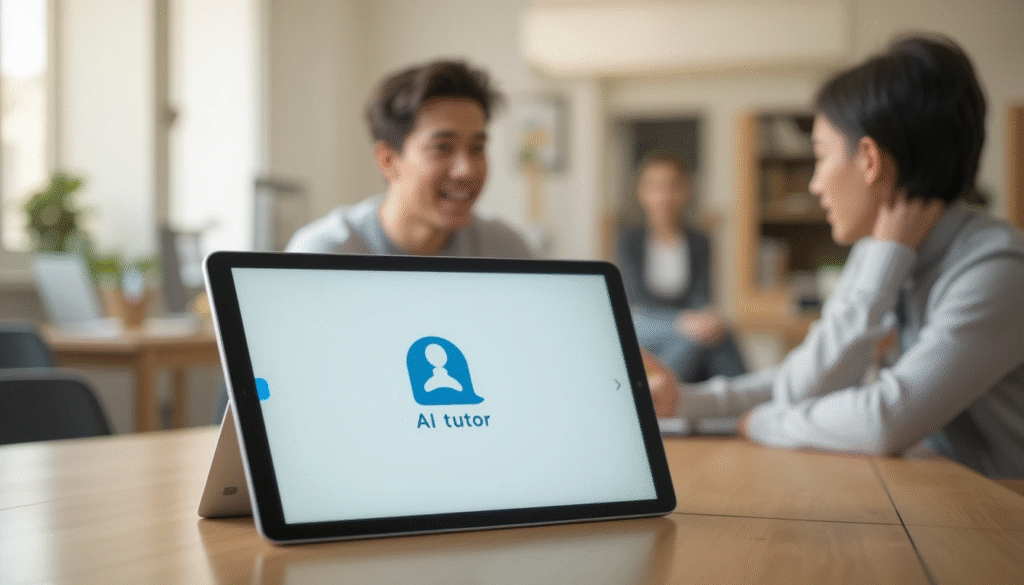
The field of AI Tutoring Systems is evolving at an incredible pace. The next generation of these tools will be even more powerful and integrated, likely featuring:
- Voice and Emotion Recognition: Tutors that can detect a student’s tone of voice to recognize frustration or confusion and adapt their approach accordingly.
- Proactive Interventions: Systems that can anticipate when a student is about to get stuck based on their behavior patterns and offer help preemptively.
- Fully Immersive Tutoring: Deep integration with VR and AR technologies to provide hands-on, simulated tutoring experiences for complex, real-world skills. This represents the next frontier for AI Tutoring Systems.
Conclusion
So, how do AI Tutoring Systems improve student performance? They achieve it by fundamentally changing the dynamic of learning. They eliminate the frustrating “waiting game” for help, provide a safe and private space for students to make mistakes and ask questions, and deliver a perfectly tailored learning experience for each individual. While they will never replace the inspirational power and emotional intelligence of a great human teacher, they are undeniably one of the most effective tools we have for building student confidence, closing knowledge gaps, and ensuring that every learner has the on-demand support they need to succeed.
Frequently Asked Questions
What is the main goal of an AI Tutoring System?
The main goal is to provide instant, personalized support to a student the moment they get stuck, eliminating the “waiting game” for help and making learning more efficient.
Are AI tutors better than human tutors?
They are different. AI excels at 24/7 availability and data-driven practice, while human tutors excel at empathy, inspiration, and explaining complex, nuanced ideas. A partnership is ideal.
How does an AI tutor know what a student needs?
It analyzes their performance in real time—things like incorrect answers, speed, and interaction patterns—to diagnose the root of their misunderstanding and provide targeted help.
Can these systems help with test anxiety?
Yes, by providing a safe, private space to make mistakes without judgment, they can build a student’s confidence and mastery of the material, which often reduces anxiety before an exam.
Is this the same as “adaptive learning”?
They are very closely related. AI Tutoring Systems are a key component of adaptive learning, as they use AI to adapt the learning material and path for each student.
Do students need special equipment to use an AI tutor?
No, most modern AI tutoring platforms are web-based and can be accessed on any standard device, including laptops, tablets, and smartphones.
Can AI tutors help with subjects like writing or art?
They are excellent at providing feedback on structural and grammatical aspects of writing. For subjective subjects like art, their role is more about providing information and inspiration.
What is the biggest challenge for AI Tutoring Systems today?
The biggest challenge is moving beyond just providing correct answers to truly understanding and fostering a student’s deeper conceptual understanding and critical thinking skills.

